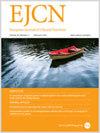澳大利亚土著人和托雷斯海峡岛民维生素D摄入量的定量分析。
IF 3.3
3区 医学
Q2 NUTRITION & DIETETICS
引用次数: 0
摘要
背景/目的:维生素D缺乏(血清25-羟基维生素D [25(OH)D]浓度)方法:我们使用2012-2013年全国原住民和托雷斯海峡岛民营养和体育活动调查(n = 4109)收集的食物消费数据和维生素D食物成分数据来量化性别、年龄组和偏远地区的维生素D摄入量。使用Wilcoxon秩和检验来评估性别和偏远地区之间维生素D摄入量的差异。结果:≥2岁土著人和托雷斯海峡岛民维生素D摄入量中位数(25、75百分位数)为80(45、145)IU/天。维生素D摄入量在男性和女性之间有统计学差异(p = < 0.001)。非偏远地区与偏远地区的维生素D摄取量差异无统计学意义(p = 0.292)。结论:土著人和托雷斯海峡岛民的维生素D摄入量较低。可以制定由土著居民和托雷斯海峡岛民长老和社区指导的以食物为基础的公共卫生战略,以促进这一人群摄入更多的维生素D。本文章由计算机程序翻译,如有差异,请以英文原文为准。
Quantifying vitamin D intake among Aboriginal and Torres Strait Islander peoples in Australia
Vitamin D deficiency (serum 25-hydroxyvitamin D [25(OH)D] concentration < 50 nmol/L) is prevalent among Aboriginal and Torres Strait Islander peoples in Australia. Alternative to sun exposure (the primary source of vitamin D), vitamin D can also be obtained from food (e.g. fish, eggs, and meat) and supplements. However, the vitamin D intake of this population group is unknown. We aimed to provide the first quantification of vitamin D intake using nationally representative data from Aboriginal and Torres Strait Islander peoples. We used food consumption data collected in the 2012–2013 National Aboriginal and Torres Strait Islander Nutrition and Physical Activity Survey (n = 4109) and vitamin D food composition data to quantify vitamin D intake by sex, age group, and remoteness of location. Wilcoxon rank-sum test was used to assess the difference in vitamin D intake between sexes and remoteness of location. The median (25th, 75th percentile) vitamin D intake among Aboriginal and Torres Strait Islander peoples aged ≥ 2 years was 80 (45, 145) IU/day. Vitamin D intake was statistically significantly different between males and females (p = < 0.001). There was no statistically significant difference between vitamin D intake in non-remote and remote areas (p = 0.292). Vitamin D intake among Aboriginal and Torres Strait Islander peoples is low. Food-based public health strategies guided by Aboriginal and Torres Strait Islander Elders and communities could be developed to promote higher vitamin D intake among this population.
求助全文
通过发布文献求助,成功后即可免费获取论文全文。
去求助
来源期刊
CiteScore
10.60
自引率
2.10%
发文量
189
审稿时长
3-6 weeks
期刊介绍:
The European Journal of Clinical Nutrition (EJCN) is an international, peer-reviewed journal covering all aspects of human and clinical nutrition. The journal welcomes original research, reviews, case reports and brief communications based on clinical, metabolic and epidemiological studies that describe methodologies, mechanisms, associations and benefits of nutritional interventions for clinical disease and health promotion.
Topics of interest include but are not limited to:
Nutrition and Health (including climate and ecological aspects)
Metabolism & Metabolomics
Genomics and personalized strategies in nutrition
Nutrition during the early life cycle
Health issues and nutrition in the elderly
Phenotyping in clinical nutrition
Nutrition in acute and chronic diseases
The double burden of ''malnutrition'': Under-nutrition and Obesity
Prevention of Non Communicable Diseases (NCD)

 求助内容:
求助内容: 应助结果提醒方式:
应助结果提醒方式:


